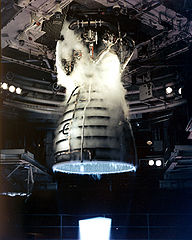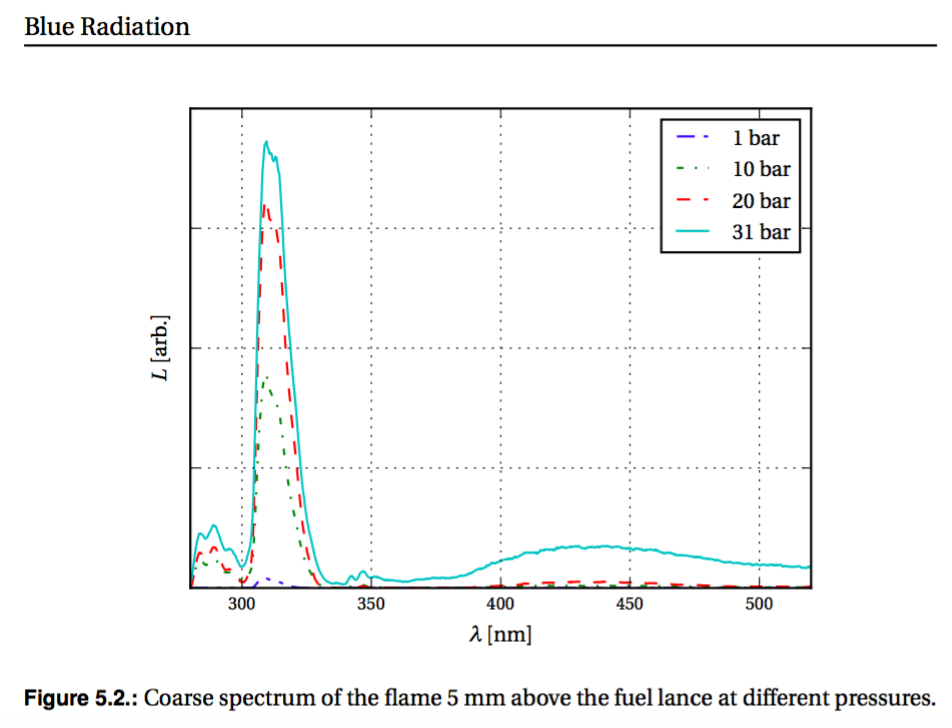Below are some screen shots from circa June 2016 launch (or re-launch) videos by Blue Origin (video link) and SpaceX (video link). The New Shepard burns $\text{H}_2$/$\text{O}_2$, while the Falcon 9 burns Kerosene/$\text{O}_2$.
I believe that at least part of the intense white/yellow light from the Kerosene/$\text{O}_2$ exhaust comes from thermal emission of Carbon particulates (soot) similar to the emission from the white/yellow part of a candle flame. There is very little luminescence from the $\text{H}_2$/$\text{O}_2$ exhaust.
The first image in the question Why do the exhaust flames from cryogenic stage engines appear to be separated from the nozzle? is quite striking, showing a very sudden appearance of brilliant light when the exhaust is compressed by a static shock wave. Presumably this is $\text{H}_2$/$\text{O}_2$ but I couldn't see a link or citation for the image.
Left (below) While candle flames also emit blue light - this is said to be mostly from Swan band emission - vibrational transitions in molecular Carbon as $\text{C}_2$. These do not occur in $\text{H}_2$/$\text{O}_2$ combustion. You can see Swan band emission stimulated by solar radiation in molecular carbon from comets as well - here is comet C/2014 Q2 (Lovejoy) (larger size available here).
Right (below) Image of Space Shuttle Main Engine test firing from here (larger size available here). Note the sudden appearance of bright light as the exhaust reaches the shock wave near the bottom of the image.
The answer there that I found the most helpful discusses the shock wave and the blue emission from $\text{H}_2$/$\text{O}_2$ exhaust. So I went back to the New Shepard launch video and sure enough - you can see what looks like blue light from the nozzle when viewed from below.
What actually produces this blue light? Is it $\text{H}_2 \text{O}$ emission, $\text{OH}^-$ emission, or something else? And why does it only appear at higher densities?
side note: see $\text{O}_2$ flame burning in $\text{H}_2$ and mixture ratio optimization.







